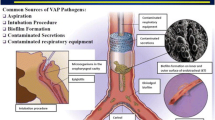Abstract
Objective
To study the risk for congenital malformations among infants whose mothers used anti-asthmatic drugs during pregnancy.
Materials and methods
We studied 24,750 infants whose mothers reported the use of anti-asthmatic drugs in early pregnancy. Infants were identified from the Swedish Medical Birth Register where drug use reported at the first maternal health care visit is recorded. Congenital malformations among the infants born were identified from that register, the Swedish Register of Congenital Malformations, and the Hospital Discharge Register. Rates of malformations among infants exposed to anti-asthmatics were compared with the background population rate of malformations (4.7%) after adjustment for year of birth, maternal age, parity, smoking, and previous miscarriages.
Results
A weak increase in the risk for a congenital malformation was seen (odds ratio = 1.09, 95% CI = 1.03–1.15) which could not be explained by the confounders studied. The risks for three specific types of malformations appeared to be increased: relatively severe cardiac defects, orofacial clefts and specifically median cleft palate, and anal atresia. For the two last mentioned groups, use of anti-asthmatics with inhaled corticosteroids showed a higher odds ratio than use of other anti-asthmatics, but the differences could be random.
Conclusions
Maternal asthma and use of anti-asthmatic drugs carry no major risk for congenital malformations in the offspring, but a slight teratogenic effect cannot be excluded. It may be due to asthma, and arguments for a stronger effect of inhaled corticosteroids than of other anti-asthmatics are weak.
Similar content being viewed by others
References
Alexander S, Dodds L, Armson BA (1998) Perinatal outcomes in women with asthma during pregnancy. Obstet Gynecol 92:435–440
Källén B, Rydhstrom H, Åberg A (2000) Asthma during pregnancy-a population based study. Europ J Epidemiol 16:167–171
Källén B, Rydhstrom H, Åberg A (1999) Congenital malformations after the use of inhaled budesonide in early pregnancy. Obstet Gynecol 93:392–395
Liu S, Wen SW, Demissie K, Marcoux S, Kramer MS (2001) Maternal asthma and pregnancy outcomes: a retrospective cohort study. Am J Obstet Gynecol 184:90–96
Sheiner E, Mazor M, Levy A, Wiznitzer A, Bashiri A (2005) Pregnancy outcome of asthmatic patients: a population-based study. J Maternal-Fetal Neonat Med 18:237–240
Demissie K, Breckenridge MB, Rhoads GG (1998) Infant and maternal outcomes in the pregnancies of asthmatic women. Am J Respir Crit Care Med 158:1091–1095
Park J, Schmer V, Myers TL (1990) Cardiovascular anomalies associated with prenatal exposure to theophylline. South Med J 83:1487–1488
Rosa F (1999) Databases in the assessment of the effects of drugs during pregnancy. J Allergy Clin Immunol 103:S360–S361
Sørensen HT, Pedersen L, Nørgaard M, Wogelius P, Rothman KJ (2005) Maternal asthma, preeclampsia and risk of hypospadias (letter). Epidemiology 16:806–807
Källén B, Otterblad Olausson P (2007) Use of anti-asthmatic drugs during pregnancy. 1. Maternal characteristics, pregnancy and delivery complications. Europ J Clin Pharmacol (in press)
National Board of Health and Welfare, Centre for Epidemiology (2003) The Swedish Medical Birth Register-a summary of content and quality. Available at: http://www.sos.se/FULLTEXT/112/2003-112-3/2003-112-3.pdf
National Board of Health and Welfare, Centre for Epidemiology (2004) Registration of congenital malformations in Swedish health registers. http://www.socialstyrelsen.se/Publicerat/2004/5120/2004-112-1.htm
Källén K (1999) Maternal smoking and congenital malformations. PhD Thesis, University of Lund, Lund
Källén B (2003) Maternal drug use and infant cleft lip/palate with special reference to corticoids. Cleft Palate Craniofac J 40:624-628
Author information
Authors and Affiliations
Corresponding author
Rights and permissions
About this article
Cite this article
Källén, B., Olausson, P.O. Use of anti-asthmatic drugs during pregnancy. 3. Congenital malformations in the infants. Eur J Clin Pharmacol 63, 383–388 (2007). https://doi.org/10.1007/s00228-006-0259-z
Received:
Accepted:
Published:
Issue Date:
DOI: https://doi.org/10.1007/s00228-006-0259-z




